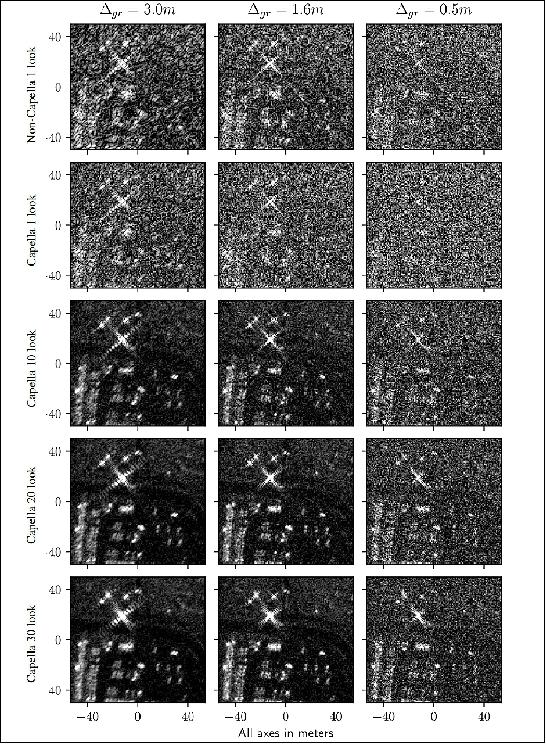The Palo Alto California-based commercial startup company Capella Space, founded in 2016 by Payam Banazadeh and William Woods, is in the process of developing a constellation of X-SAR microsatellites to provide global coverage. The Capella constellation will consist of 36 microsatellites, each one will operate at an altitude of around 500 km in an approximately 90-minute polar orbit, providing average imaging revisit times of less than one hour. The radars will be single-polarization X-band systems, capable of operating over a 500 MHz bandwidth in stripmap and spotlight imaging mode.
This year, Capella Space will launch two sub-50 kg satellites as the prelude to a constellation of 36 that will provide hourly revisit time. This constellation will enable delivery of products to meet specific user demands anywhere in the world.
The constellation will be launched in 2019 with the initial deployment of 6 satellites in two orbital planes. The average imaging revisit time will be between 3 and 6 hours, and the maximum revisit time will be 6 hours. Hourly maximum revisit times will be achieved when the full constellation of 36 satellites is deployed in 2021 (Figure 1).
Simulated results for a typical large SAR (row 1) and Capella SAR (rows 2 through 5) showing the tradeoff between multi-looking, ground-range resolution, and NESZ for a spotlight image acquisition. Multi-looked staring spotlight acquisitions with Capella SAR recover contrast in the image without degrading resolution (image credit: Capella Space)

Gordon Farquharson, William Woods, Craig Stringham, Navneet Sankarambadi, Lucas Riggi, “The Capella Synthetic Aperture Radar Constellation,” Proceedings of IGARSS (International Geoscience and Remote Sensing Symposium), Valencia, Spain, July 23-27, 2018
https://directory.eoportal.org/web/eoportal/satellite-missions/content/-/article/capella-x-sar

